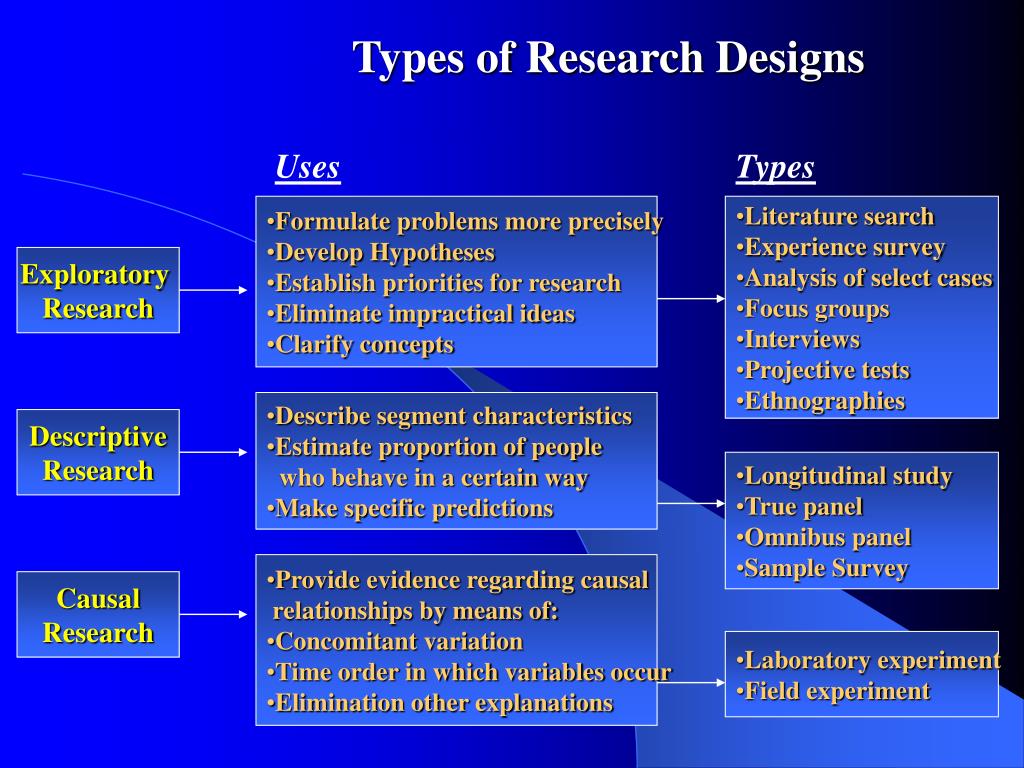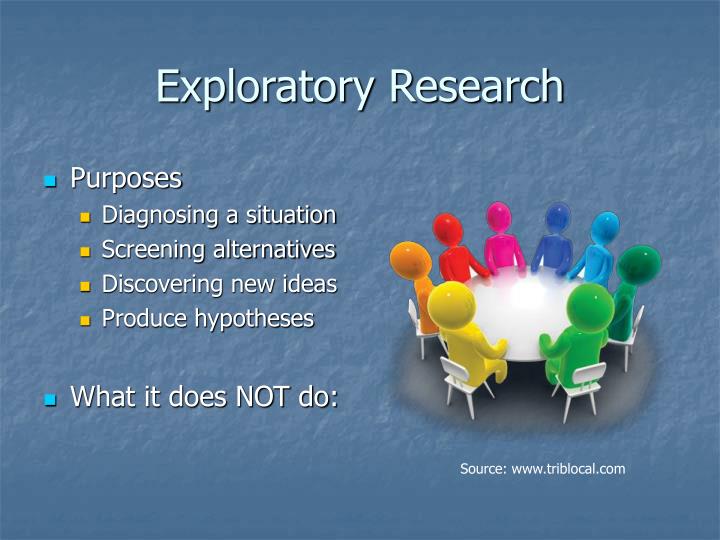Table Of Content

For example, ‘a study into the implications of COVID-19 pandemic into the global economy’ is an exploratory research. COVID-19 pandemic is a recent phenomenon and the study can generate an initial knowledge about economic implications of the phenomenon. The research design is usually incorporated into the introduction of your paper. You can obtain an overall sense of what to do by reviewing studies that have utilized the same research design [e.g., using a case study approach]. With this in mind, a common mistake made by researchers is that they begin their investigations before they have thought critically about what information is required to address the research problem. Without attending to these design issues beforehand, the overall research problem will not be adequately addressed and any conclusions drawn will run the risk of being weak and unconvincing.
Beyond exploratory: a tailored framework for designing and assessing qualitative health research
The open and natural discussion format of a focus groups allows for a wider variety of perspectives in a shorter period of time.Case analysis involves intensive study of selected examples related to the phenomenon that is the purpose of the study. Researchers can check existing records, observe how the phenomenon works, and conduct interviews. Further, some researchers were observed to be able to collect data using various methods such as primary and secondary sources. The researcher observed that multiple methods for data collection were used in a single study in order to optimize the strengths and lessen the weaknesses of each method in a research process. As a result, using a variety of data collection methods allows researchers to answer questions that cannot be answered using only primary or secondary sources. Following a review of a few articles on the subject written by various researchers who used an exploratory research design in management sciences.
METHODOLOGY
A longitudinal study follows the same sample over time and makes repeated observations. For example, with longitudinal surveys, the same group of people is interviewed at regular intervals, enabling researchers to track changes over time and to relate them to variables that might explain why the changes occur. Longitudinal research designs describe patterns of change and help establish the direction and magnitude of causal relationships. Measurements are taken on each variable over two or more distinct time periods.
Field Research Design

In doing this, the researcher attempts to determine or predict what may occur. Experimental research is often used where there is time priority in a causal relationship (cause precedes effect), there is consistency in a causal relationship (a cause will always lead to the same effect), and the magnitude of the correlation is great. The classic experimental design specifies an experimental group and a control group.
How to conduct exploratory research
This depends on what is being researched, like a food sampling for a fast food chain or maybe a presentation of potential advertisements for an anti-smoking campaign. Exploratory research is carried out when a topic needs to be understood in depth, especially if it hasn’t been done before. The goal of such a research is to explore the problem and around it and not actually derive a conclusion from it. Such kind of research will enable a researcher to set a strong foundation for exploring his ideas, choosing the right research design and finding variables that actually are important for the in-depth analysis. Most importantly, such a research can help organizations or researchers save up a lot of time and resources, as it will enable the researcher to know if it worth pursuing. Exploratory Research refers to the research methodology used when researchers have a limited understanding of the topic at hand and want to gain a broader perspective or more insights into the subject.
Descriptive Design
Furthermore, “an exploratory study may not have as rigorous a methodology as that used in conclusive studies, and sample sizes may be smaller (Nargundkar, 2008). Descriptive studies occupy a middle position, building on previously conducted exploratory work so researchers will be able to proceed with more-focused inquiry. This should include well-defined procedures including sampling protocols and analytical plans, and investigators should usually articulate expected findings prior to beginning the study. However, as researchers investigate phenomena in new settings or patient populations, it is reasonable to expect descriptive studies to generate surprises. Thus, descriptive studies also feature inductive elements to detect unexpected findings, and must be flexible enough in design to accommodate shifts in research focus and methods based on empirical findings. An example of a descriptive study is a longitudinal study of patients with ovarian cancer that employs semistructured interviews and directed content analysis to examine decision-making across patients in a novel setting.
CONCEPTUAL REVIEW
Researchers are advised to be careful not to confuse exploratory research with explanatory research, which is also preliminary in nature but instead explores why a well-documented problem occurs (Tegan, 2021). For instance, some researchers provide the final and conclusive answers to the research questions in studies where the situations are unclear and have not attracted serious investigations and research in the past. Further, some researchers employ an exploratory research design in studies where specific relationships among variables of a research problem are investigated and the information required is clearly defined. In many instances, inappropriate usage of design in the systematic investigation can infuse bias into the research process. An exploratory research design is required in the preliminary stages of research when the research problem is unclear and the researcher wants to scope out the nature and extent of a specific research problem (Elman, Gerring & Mahoney, 2020). Our review identified a number of qualitative standards and guidelines that have been published.
Motor imagery classification using sparse representations: an exploratory study Scientific Reports - Nature.com
Motor imagery classification using sparse representations: an exploratory study Scientific Reports.
Posted: Wed, 20 Sep 2023 07:00:00 GMT [source]
Further, it demonstrated the conduct and applications of exploratory research design in management sciences by referring to various articles in this field. Given the diversity of approaches, a foundational step to improving the assessment of rigour in qualitative research is to abandon the attempt to develop a single standard for the best practices regardless of study orientation and objective. These three types reflect differences in primary study objectives and existing knowledge within a topic area.
Exploratory Research – Types, Methods and Examples
This could include conducting surveys, hosting focus groups, or one-on-one interviews. Our framework is based on a team-based review of published guidelines and standards discussing the scientific conduct of qualitative health research. In contrast to previous reviews,25 we did not seek to synthesise these guidelines. Rather we drew on them to develop a conceptual framework for designing and informing formal assessments of rigorous qualitative research. It is almost impossible to come up with a research topic that hasn’t been conducted before.
It is often used to narrow down a very broad field of research into one or a few easily researchable examples. The case study research design is also useful for testing whether a specific theory and model actually applies to phenomena in the real world. The essentials of action research design follow a characteristic cycle whereby initially an exploratory stance is adopted, where an understanding of a problem is developed and plans are made for some form of interventionary strategy.
The exploratory research design focuses on collecting secondary or primary data in an unstructured format and interpreting it using informal procedures (Bernd, 2017). Due to its aims and structure, exploratory research designs incorporate the least amount of scientific method and rigor of the other research designs classified above (Umesh, 2021). When only research questions serve as the foundation of the investigation, the explorative research design is qualitative.

No comments:
Post a Comment